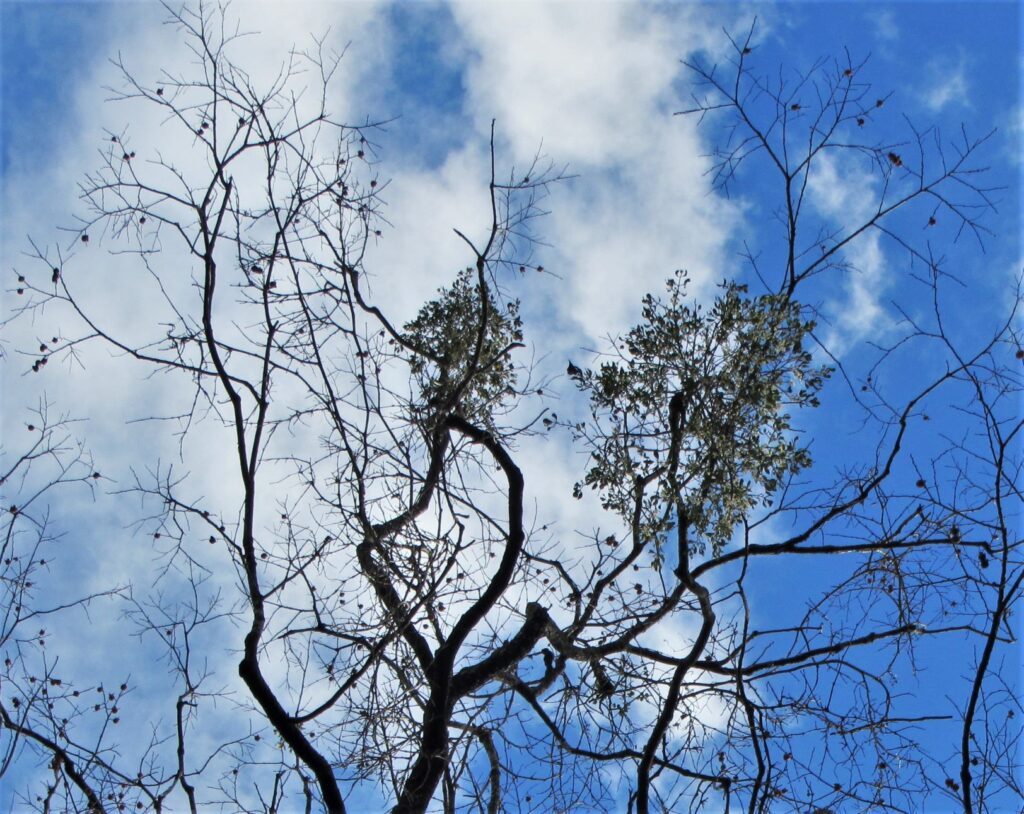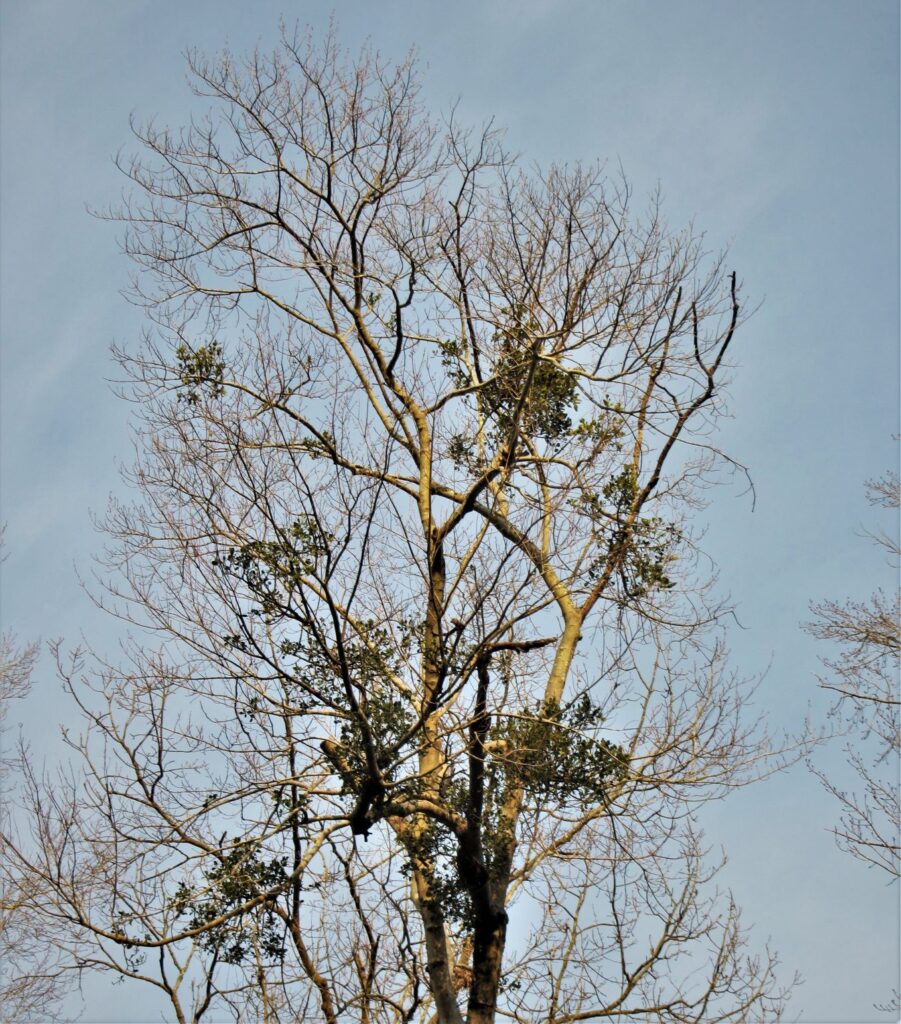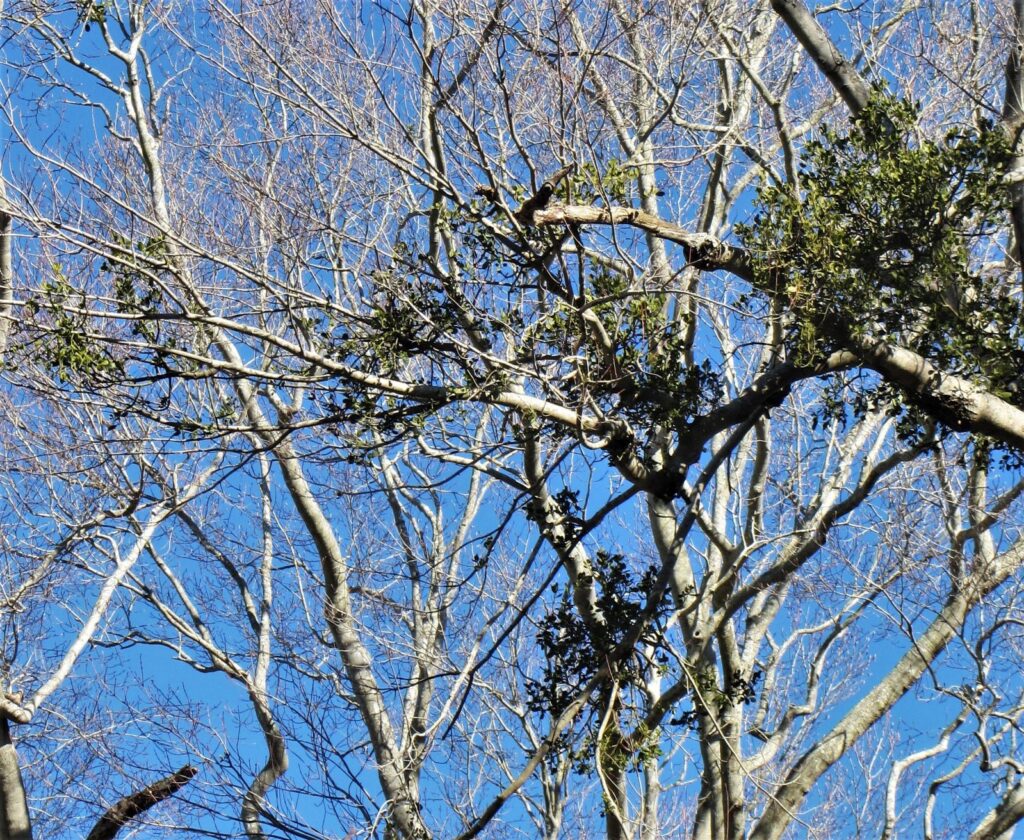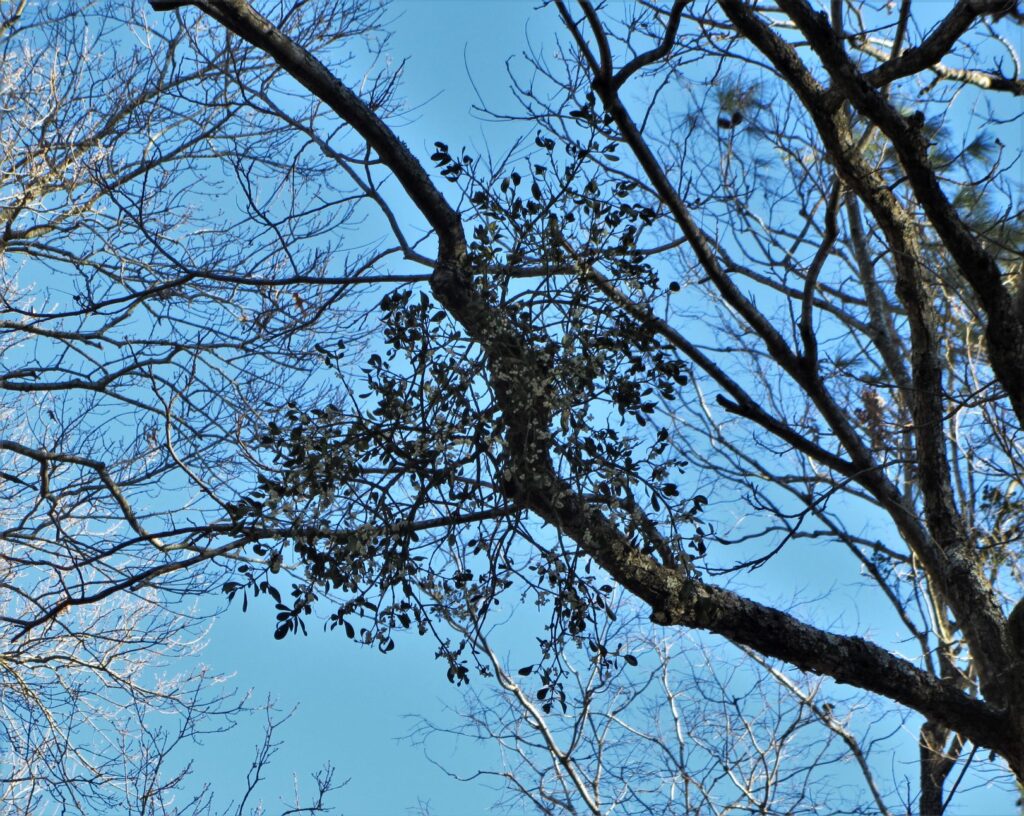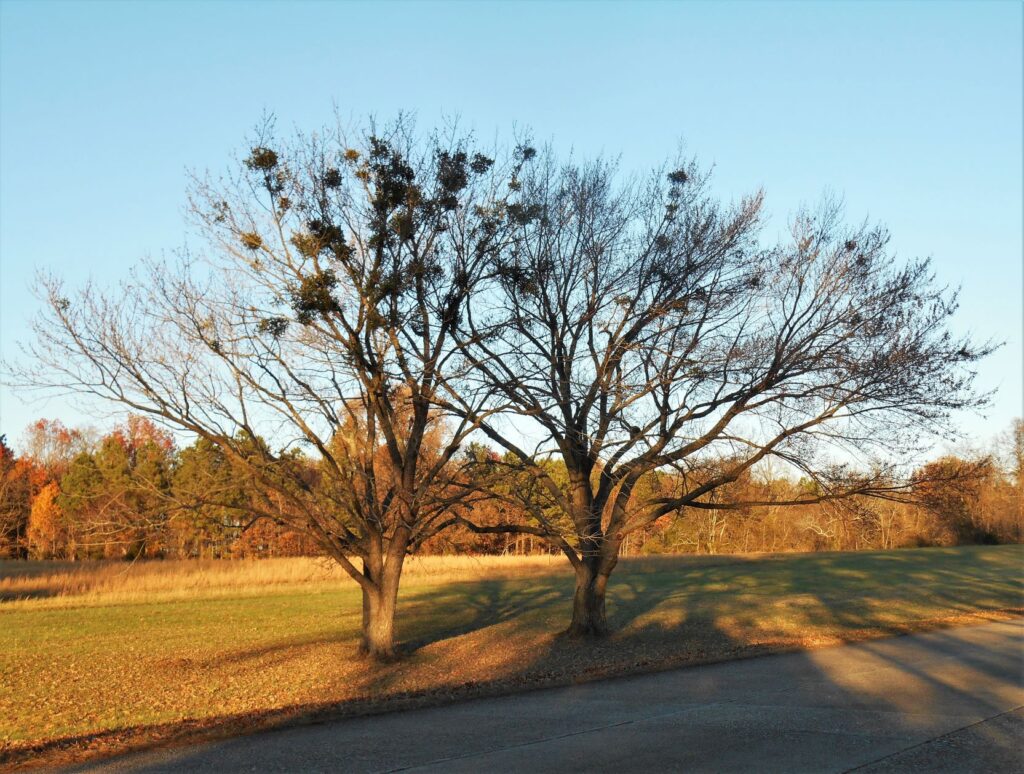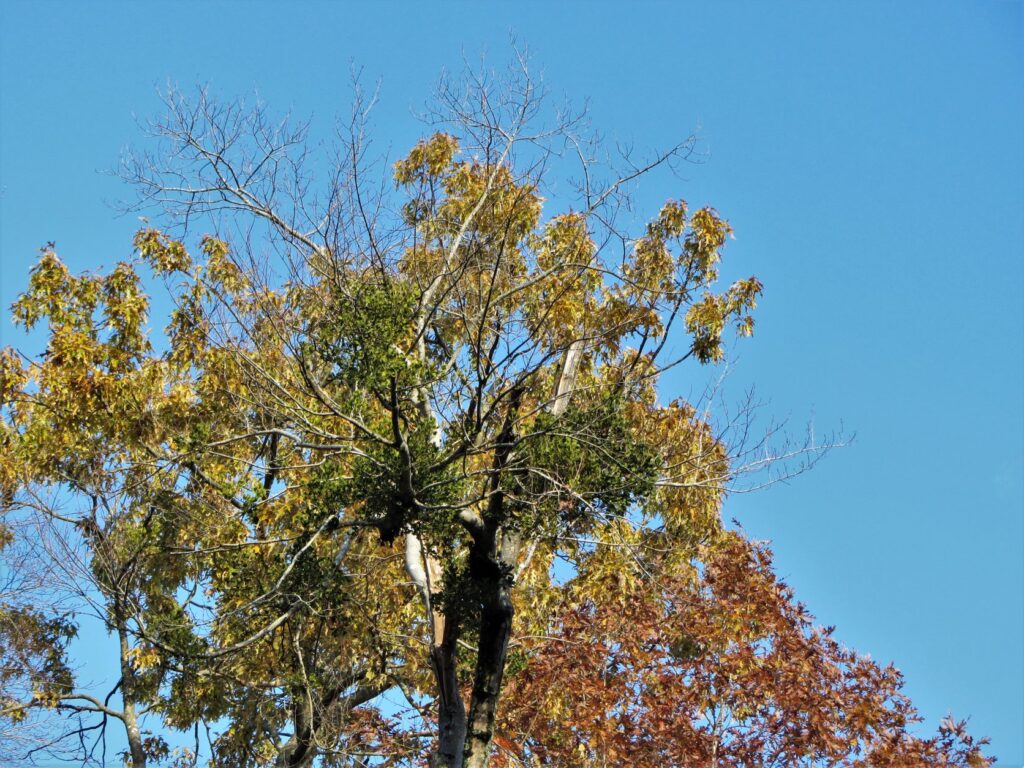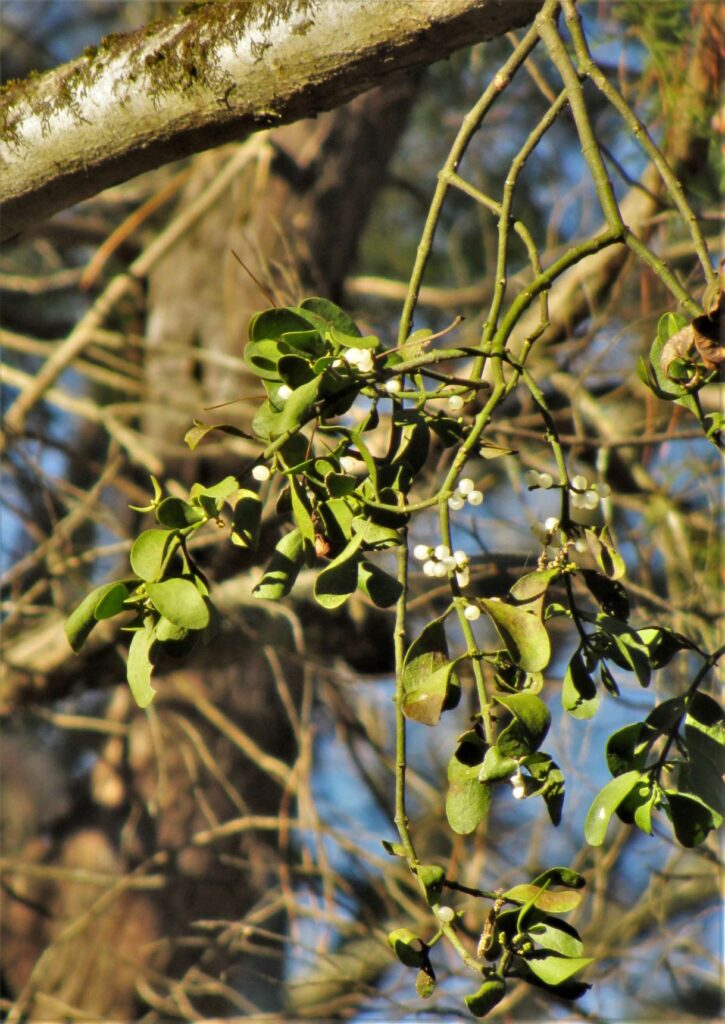Legends, Lore and the Truth About Mistletoe
From November through May we can admire the living mathematics of the trunks and branches of hardwood trees. Their leafy crowns have fallen, and their beautiful bark in all its silvery, marbled, textured variety is revealed once again.
Looking up, we sometimes see lively green clusters of mistletoe shining in the treetops. These shrubby, evergreen plants have been a part of myth and folklore since ancient times. They live suspended between heaven and Earth, rooted into the branches of hardwood trees.
Legends tell us that a little thrush, messenger for the gods, brought the first mistletoe seeds to the oak trees of Europe. The mistletoe thrush, which migrates from Africa to Europe each January through March, still prefers eating mistletoe berries over other winter foods.
Types of Mistletoe
There are hundreds of species of ‘mistletoe’ across multiple genera. There are over 200 species of Phoradendron in North America, that live on specific genera of trees and in other parts of the country. We are mostly concerned with European mistletoe, Viscum album, and American mistletoe, Phoradendron serotinum, found in Central and Eastern North America from Canada to Mexico. American mistletoe is a near equivalent substitution for European mistletoe, particularly for winter decorations.
These leafy evergreens both live as semi-parasites in the tops of hardwood trees, favoring oaks and maples. Both produce white berries in the winter, and both are planted randomly by birds. American mistletoe has larger clusters of white berries than does the European. The thick and leathery leaves of both types of mistletoe are emerge opposite from one another on thick green stems.
Both European and American mistletoe begin life as a seed, deposited on a tree branch by a bird. The mistletoe berry contains a very sticky juice. Whether the seed is rubbed off a bird’s beak onto the branch as the bird eats, or is deposited in the bird’s droppings, the juice surrounding it cements it to the bark until it has the chance to germinate.
Instead of roots, the new plant sends out haustoria, a type of aerial root, which penetrate the bark and grow into the wood to both anchor the mistletoe plant and absorb water and minerals from the host. The evergreen mistletoe produces its own food from sunlight, as does every other plant. It relies on its host for water, but not for food. That is why it is considered a semi-parasite.
‘Magical’ Mistletoe in Lore and Legend
So perhaps mistletoe, never planted by a human hand, is a ‘gift of the gods.’ It has been considered a magical and powerful plant in Celtic, Viking, Asian and Indigenous American cultures for millennia.
Sacred to the Norse goddess Frigga, European mistletoe, Viscum album, was harvested at the summer and winter solstices by the Druids using a golden sickle, and it was never allowed to touch the ground. Both berries and leaves have medicinal qualities, although it is considered poisonous when ingested in quantity.
Mistletoe leaves were worn as amulets to ward off illness in medieval Europe. Dried leaves were powdered and used in healing teas. Japanese and Native American women used mistletoe leaves to encourage fertility and to ease childbirth.
The Druids, who worshiped in groves of trees, and still do today, consider the oak tree as a sacred expression of the supreme intelligence of the universe. Mistletoe, which depends on the tree for life, is a metaphor for humankind in its dependence on that power.
Mistletoe has been used, along with other evergreens, to decorate for Winter Solstice celebrations each December. Its mythic associations with masculinity and fertility, and with marriage, have earned it a prominent place in “kissing ball” decorations, hung from doorways and chandeliers. Couples kiss under the mistletoe to seal engagements, cement friendships, make up after arguments, and often to begin new relationships.
The Wildlife Value of Mistletoe
The mistletoe plant provides food and shelter for numerous birds and insects. Some species of birds create their nests in mistletoe clusters. They eat both the berries and the young leaves and shoots. When mistletoe blooms in the spring, it provides nectar for a variety of insects. Its leaves serve as a host plant for Great Purple Hairstreak larvae. Research has shown that the presence of mistletoe increases biodiversity in woodlands where it is found.
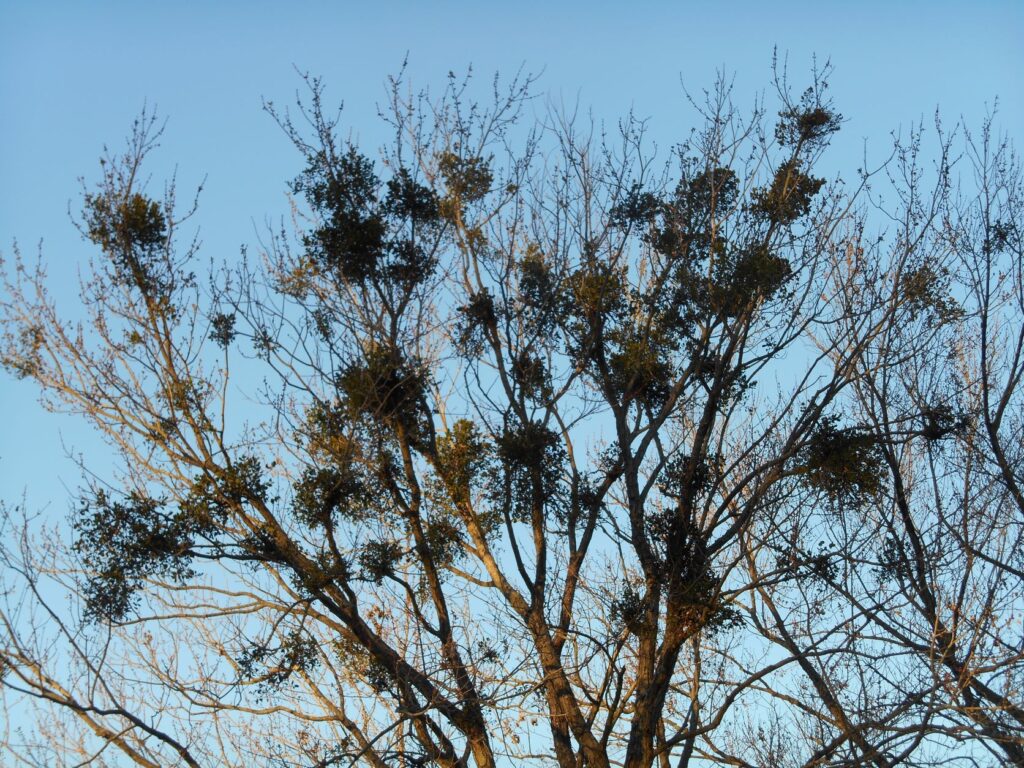
This old growth of mistletoe is hosted by healthy maple trees growing in full sun beside the Colonial Parkway.
And the Trees?
A large colony of mistletoe can weaken a tree over many years, and a clump of mistletoe can disfigure the branches. Large clumps get heavy, especially in wet and freezing weather. But in general, the host and guest can live quite peacefully together for a long time. The mistletoe plant isn’t using the tree’s nutrition. It is simply plumbed into the tree’s circulatory system, drawing water just as the tree’s leaves draw and release water each day. Botanists have noticed that branches supporting mistletoe are generally the last to die on older, declining trees.
The only way to remove mistletoe from a tree is to prune the branch on which it is growing. This often spoils a tree’s structure and symmetry when the branches are removed. Since it won’t kill an otherwise strong and healthy tree, there really is no need to do this. Shooting stems of mistletoe out of a tree with a gun or arrow is traditional way to harvest it to use at the holidays, without pruning the tree.
Mistletoe is not something that a gardener plants. I am always very happy to find it growing nearby, as though it is a special blessing of nature. Sometimes pieces of it get knocked down by strong wind or a falling branch. I always collect it and take it inside.
Clusters of mistletoe add their own special beauty to a tree’s bare branches during winter. It is another beautiful and functional plant in a wildlife garden.
All Photos by E. L. McCoy
For More Information:
Carolina Nature: Oak Mistletoe
Digital Atlas of the Virginia Flora
Forest Pathology.org: True Mistletoes
INaturalist.org: American Mistletoe

